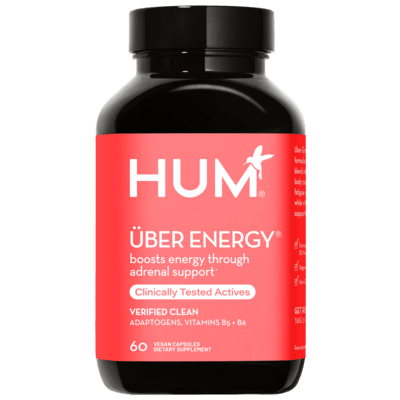Neuroscience researcher Rita Hitching, MSc, fills us in on the wonderful world of brain training. Plus: how to exercise your brain to stay sharp—and maybe even get smarter—over the years.
Scientists have done a good job of sharing the many benefits of exercise, ranging from stronger mental health, increased longevity, and better overall health and well-being.
But what does the latest research have to say about exercising the brain? And can you really become smarter through brain training?
Let’s find out.




What Is Cognitive Brain Training?
If you haven’t heard of brain training, it’s all the rage. It asserts improvements in mental functioning, and it’s not just for those wanting to prevent age-related cognitive decline. The rise of the brain training industry stems from two parallel insights:- the adult brain is plastic, meaning that connections between neurons, and even brain regions, can be stimulated by performing certain activities
- like the rest of the body, the brain ages
At what age does brain function decline?
There’s conflicting evidence as to when the brain is at peak performance, or if we get better at certain cognitive tasks as we age. Brain imaging studies show that the brain’s overall performance starts to decline in your mid-30s. As the brain ages, there’s visible shrinkage in the hippocampus, an area associated with memory. There’s also a reduction in the level of available glucose, which is the brain’s energy source for firing neurons. But not all hope is lost! If you want to stay on top of your game, you may want to consider exercising your brain muscle or grey matter. And thankfully, there are many easy ways to exercise your mind.How to Exercise Your Brain
So, are you ready to exercise your brain? Here’s what science has to say about how to train your brain to keep it in fighting shape.
1. Play Brain Games
Brain training platforms such as Luminosity, Elevate, Peak, Happy Neuron, and BrainHQ, have developed games that indicate improved memory, attention, language, executive functions, and visual/spatial skills. Even Nintendo has joined the brain training ring. The research evidence on brain games is unclear. Some studies show positive results, including for young adults and those aged over 65. However, others draw opposing conclusions, particularly for children. At any rate, classic brain teasers like crosswords and Sudoku do show improvements when it comes to concentration and memory.2. Surprise Your Brain with Novelty
The brain has two main networks in which it operates:- the default mode, which conserves energy
- the salience network, which selects the stimuli worthy of our attention
- promote neuroplasticity
- release dopamine
- change blood flow in several brain regions including the ventral striatum, which appears to play a central role in learning
- moving your desk to a new position
- sitting in a different location
- brushing your teeth with your non-dominant hand

3. Let Your Brain rest
Homeostasis is a principal feature of the body and brain. So as much as novelty is important to keep your brain sharp, perhaps surprisingly, so is boredom. Letting your brain daydream produces benefits by deactivating the salience network. Mental wandering enables your brain to connect thoughts and ideas freely while it’s not busy processing information. In its resting state, it activates connections between areas of the brain associated with divergent thinking, which helps form creative ideas. The process of not thinking about anything in particular will enable your brain to consider options that it may previously have disregarded. On the other hand, constant stimulation prevents the consolidation of information and memories from forming. Simply put, downtime can lead to many emotional and cognitive benefits. For instance, the brain state of mindfulness meditation is all about ceasing fixation on thoughts. In addition to spurring creativity, meditation can lead to:- increased memory, attention, and emotional regulation
- feelings of relaxation
- improved cognitive function
4. Get Quality Sleep
Good sleep is an integral part of brain training. If you’re not getting a good night’s sleep, you may not be functioning at your best. While you sleep, the brain does its housekeeping and recalibrates. It removes the buildup of toxins from a day of thinking by flooding the brain with cerebrospinal fluid, which effectively “washes out” your brain. This form of overnight therapy is essential to your well-being. Research has shown that sleep may play a role in helping the brain triage, or decide which memories to consolidate or dispose of. In addition, sleep provides the brain with the opportunity to actually come up with solutions to consolidated problems. Conversely, sleep deprivation is strongly associated with changes in mood, impaired cognitive function, loss of concentration, and impaired decision making. Chronic sleep deprivation can contribute to negative neurological changes and more serious cognitive decline.
5. Increase Brain Connectivity Through Hobbies
We really have two brains—the right and left hemispheres—that are connected via the corpus callosum. Research shows that people with higher IQs have thicker, more densely connected brains. Now, time for great news: By engaging in activities that encourage greater connectivity between the brain’s two hemispheres, you can effectively become smarter. So, how exactly can you train your brain for greater connectivity and intelligence? First, activities involving music are a fantastic way to integrate your entire brain. Even listening to music is great—and no, it doesn’t have to be classical music. If you know how to play an instrument, make time to incorporate playing into your weekly routine. If you haven’t played since you were a kid or want to learn, (re)start now to keep your brain young. Second, learning a new language is an excellent way to increase brain connectivity. Thankfully, you don’t have to master the language completely to increase connectivity between brain regions. In addition, reading fiction can improve your vocabulary and creative thinking skills. Finally, dancing is one of the best activities incorporating multiple brain regions. It threads in the auditory cortex, vestibular system, and memory. If you can find someone to salsa with, even better!6. Perform Physical Activity Regularly
Last but not least, let’s focus back on exercise. Evidence in favor of the brain benefits of physical exercise is very robust. In fact, any activity that raises your heart rate increases blood flow to the brain. This results in neuronal structures getting flooded with oxygen and glucose, the energy source axons need to communicate across synapses. Additionally, young adults who exercise regularly have better memory and attention. Exercise increases the release of brain-derived neurotrophic factor (BDNF), which is key for brain function. BDNF also shows promising results in promoting neuroplasticity in adults and preventing cognitive decline associated with aging and more complex brain health issues. Finally, in older adults, pairing physical exercise with braining training has an even greater effect on cognitive function.
The Bottom Line
As you can see, there are countless ways to exercise your brain. Even better, there’s a good chance you’re engaging in some of them already. Whatever you choose to do to keep your brain in tip-top shape, have fun with it and mix things up. Dedicate more time for brain training activities that you enjoy, whether that’s doing Sunday crosswords, reorganizing your home, or walking with friends.More like this









